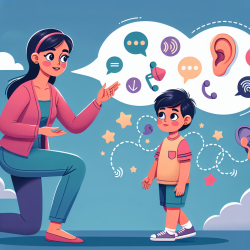At TinyEYE, we understand the importance of creating inclusive educational environments where every child feels heard and valued. For children who are quiet or reluctant to talk, particularly those experiencing selective mutism, providing the right support can make a world of difference. Here, we explore some effective strategies that can help these children find their voice.
Understanding Selective Mutism
Selective mutism is an anxiety disorder characterized by a child's inability to speak in specific social situations despite being able to speak comfortably at home. This condition typically emerges between the ages of two and four. If you notice signs of selective mutism in your child or student, seeking advice from a local Speech and Language Therapy drop-in service can be beneficial.
Strategies to Support Quiet Children
Help Children Join In
- Find activities within the child’s "comfort zone" regarding communication. This might include activities where they can participate using gestures, pictures, or answering questions with single words.
Encourage Play
- Encourage children to play with peers in activities that do not put pressure on them to speak. Games that involve taking turns can be particularly helpful in reducing anxiety around communication.
Acknowledge Their Struggle
- Let children know that it is okay to find speaking difficult and acknowledge their feelings. This validation can reduce anxiety and build trust.
Give the Child a Voice
- Implement alternative communication methods such as a two-way home-school diary where parents can write down messages from their child.
Reduce Questions
- Avoid turning conversations into interrogations by asking too many questions. Instead, comment on what the child is doing and what is happening around them to create a more relaxed dialogue.
These strategies are designed to help all children who might feel anxious about speaking in certain social settings. By fostering an environment of understanding and support, educators and parents can empower quiet children to express themselves more freely.
For more information on supporting children with selective mutism, please follow this link.










